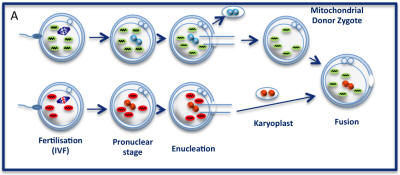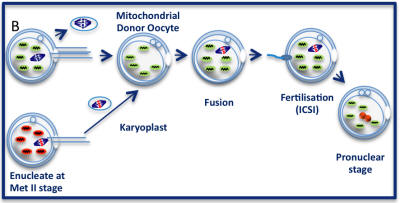Catholic Medical Quarterly Volume 64(3) August 2014
News
Mitochondrial transfer and the HFEA
 The
CMA submitted its response to the HFEA consultation mitochondrial transfer
and is saddened to see that the technology is to be allowed despite our
concerns. Some will wonder why health care workers would oppose treating
illnesses such as mitochondrial disease. The answer is remarkably simple.
The
CMA submitted its response to the HFEA consultation mitochondrial transfer
and is saddened to see that the technology is to be allowed despite our
concerns. Some will wonder why health care workers would oppose treating
illnesses such as mitochondrial disease. The answer is remarkably simple.
We said in our submission that “Because we see the value in every human life and the mitochondrial transfer procedure involves the sacrifice of one life for another the Catholic Medical Association (UK) is completely opposed to this destruction of life. In other consultations we have made it clear that we do not agree with Embryo Research, as an embryo is already the beginning of a new, unique, Human Being. While we understand that Mitochondrial Diseases can be very serious and distressing, and it must be “good” to find a way of avoiding them, such a good “end” cannot be used to justify the “means” by which it is executed. In the situation of Pro Nuclear Transfer, where an embryo is destroyed, we do not believe this means can ever be justified.”
 In
the situation of Maternal Spindle Transfer, where two unfertilised eggs
are involved, a human life is not destroyed, but we continue to oppose
this because of the interference with the reproductive process and also
the reality that implanted embryos have three parents, and there is
permanent change on the gene line.
In
the situation of Maternal Spindle Transfer, where two unfertilised eggs
are involved, a human life is not destroyed, but we continue to oppose
this because of the interference with the reproductive process and also
the reality that implanted embryos have three parents, and there is
permanent change on the gene line.
With both of these techniques we also know that, just as with IVF, the very large majority of embryos created will not survive to birth, with many failing to implant in the womb, and many more destroyed after storage.
As in other branches of medicine, and in all walks of life generally, we must oppose things that are wrong, even if they can bring some benefits. In the end, the ends cannot justify the means. And, in her opposition, the Church upholds to the highest degree, the dignity of every human person.
Diagrams of Pronuclear and Spindle Transfer. Credit: Prof Mary Herbert, Newcastle University
